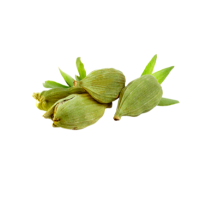Turkish coffee is more than just a drink; it is an experience that blends culture, tradition, and taste. Known for its rich flavor, thick texture, and unique preparation method, it stands apart from regular coffee. Unlike other brewing techniques, Turkish coffee is prepared in a special pot called a cezve, where finely ground coffee is simmered slowly to create a frothy, aromatic cup. Served unfiltered, it allows drinkers to enjoy both the taste and ritual that come with it.
Origin of Turkish Coffee
The origins of Turkish coffee date back to the 16th century when coffee made its way to the Ottoman Empire. It quickly became a significant part of daily life, especially in Istanbul. Coffeehouses became social hubs where people gathered to converse, exchange ideas, and enjoy a cup together. Over time, Turkish coffee became recognized by UNESCO as an Intangible Cultural Heritage of Humanity, symbolizing not only a beverage but also hospitality and tradition.
Ingredients with Pictures
- Finely Ground Coffee
Coffee beans ground into a powder-like texture are essential. Their ultra-fine grind ensures proper extraction and helps form the signature foam.

- Cold Water
Cold water allows coffee grounds to dissolve slowly, releasing flavor gradually while creating the desired texture.

- Sugar (optional)
Sugar is added before brewing, not after. This allows it to blend evenly, catering to different taste preferences.

- Cardamom (optional)
Some versions add cardamom pods or ground cardamom for a warm, aromatic twist.

- Cezve (special pot)
While not an ingredient, it is the traditional tool that gives the coffee its authentic character.

Ingredients with Quantities
| Ingredient | Quantity per cup |
|---|---|
| Finely ground coffee | 1 heaping tsp |
| Cold water | 1 demitasse cup (about 70 ml) |
| Sugar (optional) | 1–2 tsp (to taste) |
| Cardamom (optional) | Pinch or 1 pod |
Step by Step Turkish Coffee Recipe
- Measure the Water
Start by using the serving cup itself to measure cold water. Pour it into the cezve (Turkish coffee pot). This method ensures you get the exact serving size and balance between coffee and water. - Add the Coffee Grounds
For each serving, add one heaping teaspoon of finely ground Turkish coffee. The grind must be powder-like so it dissolves slowly and creates the right texture. - Add Sugar if Desired
Decide the sweetness level before brewing. If you prefer it plain, leave it unsweetened (sade). For medium (orta), add about one teaspoon of sugar, and for sweet (şekerli), add two teaspoons or more. Sugar must be added at this stage so it dissolves properly during brewing. - Optional Flavoring
If you want extra aroma, add a small pinch of cardamom or a pod. This step is optional but traditional in some regions. - Mix Well Before Heating
Stir the water, coffee, and sugar mixture thoroughly before placing the cezve on heat. This prevents lumps and ensures even blending. - Simmer Slowly on Low Heat
Place the cezve over low heat. Do not rush the process with high heat, as it will spoil the foam. Slowly, a frothy layer will rise to the surface. - Watch the Foam Carefully
As the foam starts rising near the edges of the cezve, remove it from the heat immediately. Do not let it boil over, or the coffee will lose its signature taste and texture. - Pour into Cups Gently
Carefully pour the coffee into demitasse cups, dividing the foam equally between them. The foam is considered the pride of a well-made Turkish coffee. - Allow Grounds to Settle
Wait for about a minute before sipping. This allows the coffee grounds to sink to the bottom, leaving the top smooth and enjoyable.

Common Mistakes to Avoid
One common mistake is stirring the coffee after heating begins, which ruins the foam. Another is letting it boil too long, causing bitterness and loss of aroma. Some people use hot water instead of cold, but this prevents the slow extraction needed for authentic flavor. Additionally, many pour too quickly, disturbing the foam or grounds. Each of these errors affects both texture and taste, so patience and precision are key.
Tips for Making Perfect Turkish Coffee
- Use Freshly Ground Coffee
Always grind coffee beans just before brewing. Turkish coffee requires an extremely fine grind, almost like powder. Fresh coffee ensures a richer aroma and a stronger flavor. - Measure with the Serving Cup
Use the small serving cup (demitasse) to measure water before pouring it into the cezve. This guarantees the perfect serving size and prevents waste. - Keep the Heat Low
Patience is key. Brew slowly on low heat. High heat may cause the coffee to boil too quickly, which destroys the foam and makes the taste harsh. - Do Not Stir After Heating Starts
Stir only at the beginning to mix sugar and coffee. Once it begins heating, avoid stirring to preserve the foam. Foam is a signature element of Turkish coffee. - Serve Immediately
Turkish coffee should be served as soon as it is ready. Delaying too long can cause the foam to disappear and the flavor to weaken.
Variations of Turkish Coffee
- With Cardamom
Adding ground cardamom or a pod gives the coffee a warm, spiced aroma. This variation is popular in Middle Eastern countries and enhances both flavor and fragrance. - With Milk
Though not traditional, some people replace water with milk for a creamier taste. This makes the drink smoother but slightly heavier. - Sweetened Styles
Turkish coffee is often prepared at different sweetness levels. Sade is without sugar, orta is medium sweet, and şekerli is very sweet. Choosing the sweetness level customizes the drink to personal preference. - With Cinnamon or Cloves
A pinch of cinnamon or a clove added during brewing creates a festive and aromatic variation. This is especially enjoyed in colder seasons. - Iced Turkish Coffee
Some modern versions cool the brewed coffee and serve it with ice. While not traditional, it appeals to those who prefer cold drinks.
Serving Suggestions
Turkish coffee is best enjoyed in small demitasse cups, accompanied by a glass of cold water and often a piece of Turkish delight. Serving with a sweet treat balances the strong, bold flavor. Traditionally, it is also part of social gatherings, symbolizing friendship and hospitality.
Nutritional Information (per serving)
| Nutrient | Amount |
|---|---|
| Calories | ~25–35 |
| Carbohydrates | 2–3 g |
| Protein | 0.5 g |
| Fat | 0.1 g |
| Caffeine | 60–65 mg |
Why People Love Turkish Coffee?
People love Turkish coffee because it is more than just caffeine—it is tradition. The thick, rich flavor lingers longer than regular coffee, and the foam adds texture. Additionally, the ritual of slowly brewing and sipping makes it feel like a moment of relaxation. Its cultural connection also gives drinkers a sense of heritage and authenticity.
Benefits of Turkish Coffee
-
Rich in Antioxidants
Turkish coffee contains high levels of antioxidants that help protect the body from free radicals. These compounds support cell health and may reduce the risk of chronic diseases. -
Boosts Energy and Focus
Thanks to its caffeine content, Turkish coffee improves alertness and concentration. It gives a quick energy boost that helps with productivity and mental performance. -
Supports Social Connections
Turkish coffee is traditionally enjoyed with friends and family. Sharing it creates a sense of togetherness, making it more than just a drink. -
Promotes Digestive Activity
Drinking it after meals may help stimulate digestion. The warm beverage can aid in breaking down food and improving metabolism. -
Cultural and Emotional Benefits
It is deeply tied to history and tradition, giving people a sense of cultural pride and identity while also creating relaxing rituals.
Disadvantages of Turkish Coffee
-
High Caffeine Sensitivity
For people sensitive to caffeine, Turkish coffee may cause jitteriness, anxiety, or insomnia, especially when consumed late in the day. -
Digestive Issues
Since it is unfiltered, the coffee grounds remain in the cup. For some, this may cause stomach irritation or acidity if consumed too often on an empty stomach. -
Possible Cholesterol Impact
Turkish coffee contains cafestol and kahweol, compounds found in unfiltered coffee. When consumed excessively, they may raise LDL cholesterol levels. -
Addictive Habit
Drinking it too frequently may lead to caffeine dependence. This can cause headaches, irritability, or fatigue if intake is suddenly reduced. -
Not Suitable for Everyone
People with certain medical conditions, such as heart problems or high blood pressure, may need to limit their intake due to its stimulating effects.
FAQs
-
Can I use regular ground coffee?
No, it must be very finely ground, almost powdery. -
Do I need a cezve?
While traditional, you can use a small pot, but the foam won’t be the same. -
Can I add milk?
Traditionally no, but some variations allow it. -
Why is foam important?
Foam indicates proper brewing and is a sign of quality. -
Can I reheat Turkish coffee?
No, reheating ruins the flavor and foam. -
How much caffeine is in one cup?
About 60–65 mg, similar to espresso. -
Should I filter the grounds?
No, the grounds settle at the bottom and should remain there. -
What size cups are used?
Small demitasse cups, usually 2–3 oz. -
Can I sweeten after brewing?
No, sugar must be added before heating. -
Is Turkish coffee stronger than espresso?
Flavor-wise yes, but in caffeine, it’s slightly less per ounce.

Conclusion
Turkish coffee is a timeless beverage that combines rich flavor with cultural tradition. By using finely ground beans, brewing slowly, and serving with care, you can enjoy its authentic taste. Whether plain, sweetened, or spiced, each variation has its charm. Loved for its boldness and heritage, Turkish coffee continues to bring people together across generations.
